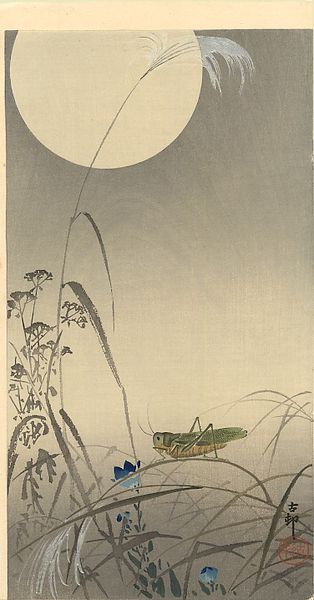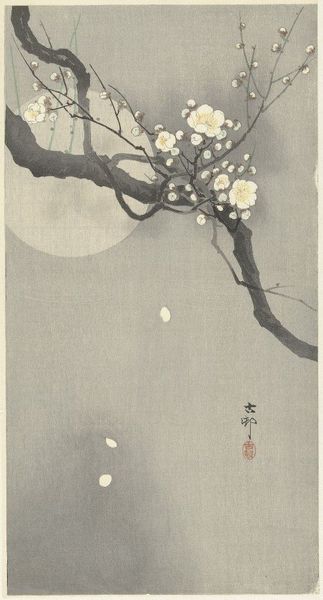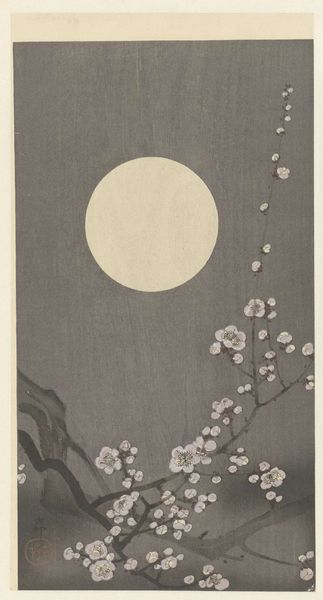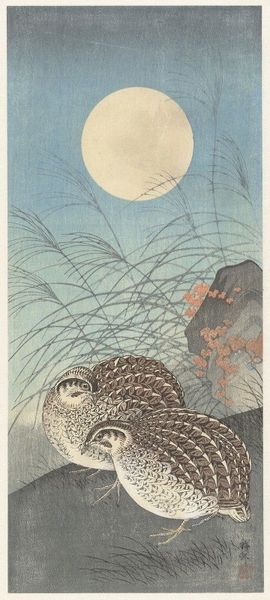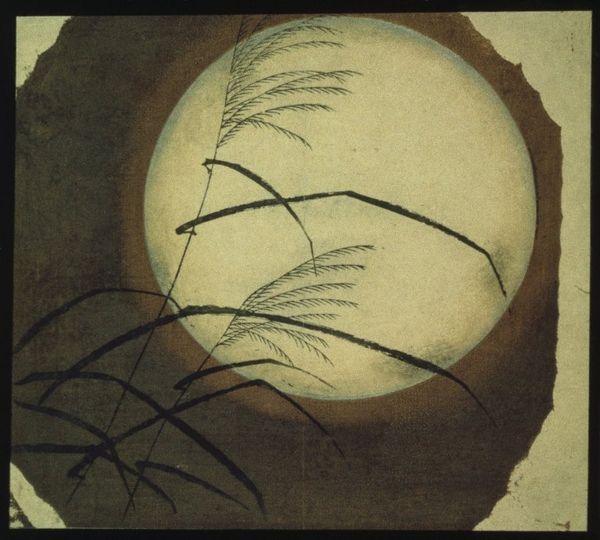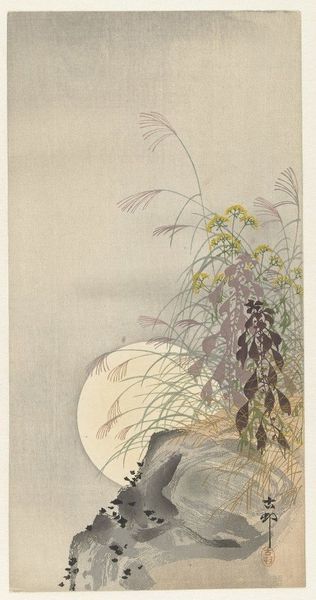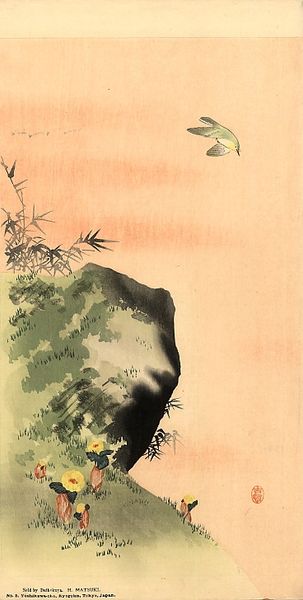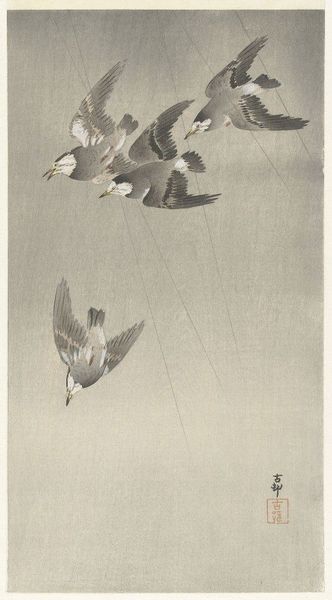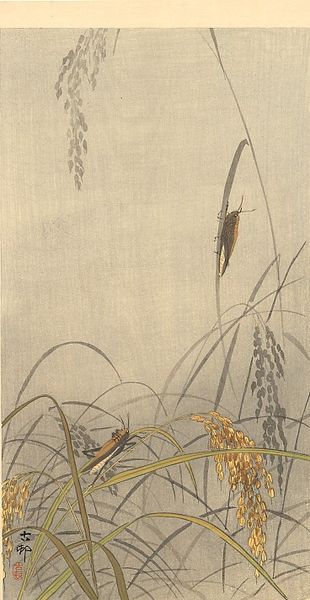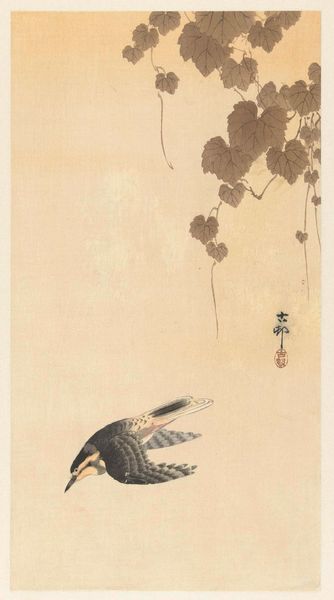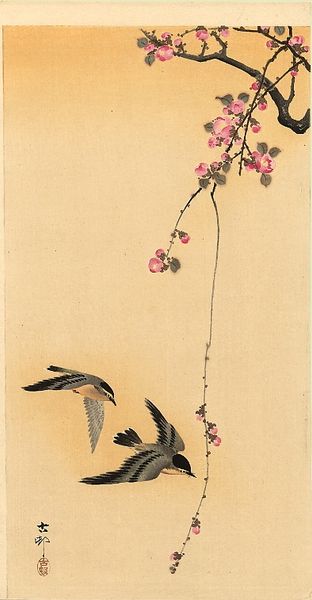
painting, watercolor
#
night
#
blue ink drawing
#
painting
#
impressionism
#
landscape
#
flower
#
ukiyo-e
#
form
#
watercolor
#
plant
#
orientalism
#
line
#
nature
#
watercolor
#
realism
Copyright: Public domain
Ohara Koson’s woodblock print, "Moon and Blue Flowers," offers a serene glimpse into early 20th-century Japan. The floating world aesthetic of *ukiyo-e*, which previously focused on the lives of courtesans and actors, was here being redeployed to the depiction of nature. Koson, working at a time of rapid modernization, harked back to traditional artistic styles. Yet he also adapted to Western tastes by producing prints for export. This print, with its muted colors and delicate lines, reflects both Japanese artistic conventions and a Western appetite for Japonisme. The choice of flowers, the stylized moon, and the subtle use of color all speak to a refined sensibility. The effect of light, shadow, and atmosphere invites contemplation, reflecting a broader cultural interest in nature. To understand Koson's place in art history, we might consult auction records to trace the movement of his prints in the market or delve into the archives of the publishers who commissioned his work. In doing so, we recognize the power of art as something contingent on the social and institutional contexts in which it was made.
Comments
No comments
Be the first to comment and join the conversation on the ultimate creative platform.
